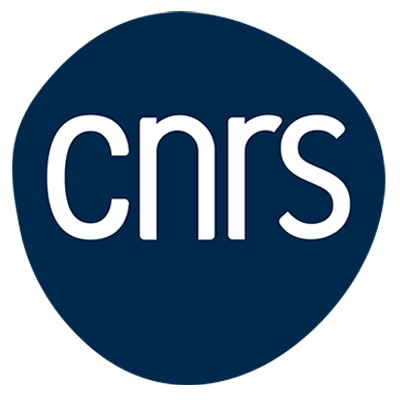IRP GEODESIC
French-Australian International Research Project in EngineeringIRP (LIA) GEODESIC
2017-2020
Contact:
Dr. Nicolas Le Bihan
nicolas.le-bihan(at)gipsa-lab.fr
Prof. Jonatha H. Manton
jmanton(at)unimelb.edu.au
IRP GEODESIC
News

Non-stationary bivariate signal: geometric and polarization parameters highlight using geometric signal processing approach.
Credits:
“Time-frequency analysis of bivariate signals”,
J. Flamant, N. Le Bihan and Pierre Chainais
Applied and Computational Harmonic Analysis, Vol. 46, Issue 2, pp. 351-383, 2019
Introduction
The GEODESIC (Geometry-Driven Signal and Image Processing) lab conducts research in the field of data science, with emphasis in signal and image processing applications. Specifically, researchers at GEODESIC develop new methodologies that take into account the geometry of the datasets and of the ambient space they live in.
Missions and research themes
The research themes of GEODESIC are the following:
– Topic 1: Adaptive Signal Processing on Manifolds
This reserach topic focuses on adaptive signal processing on manifolds. Precisely, it aims to
provide a comprehensive framework, describing the complexity and performance of adaptive algo-
rithms on manifolds. Currently, in the field of signal processing, adaptive algorithms on manifolds
are mostly considered heuristically, and on a case-by-case basis. the work at GEODESIC is to provide users with comprehensive guidelines for the design of efficient adaptive algorithms especially designed for processing data belonging to manifolds. Adaptativity is a key ingredient in many applications (pose or attitude estimation, localization, etc.) and manifold valued datasets are numerous. A timely challenge is to propose algorithms which are both adaptive and constrained to live on manifolds.
– Topic 2: Non-Commutative Signal Processing
In recent years, the signal and image processing community, and in a wider sense the engineering
community, has faced an increasing number of problems involving non-commutative algebraic
structures and manifolds. Signals and images taking their values on structures such as spheres
(Cosmic Microwave Background, probability density functions of multiple scattering processes,
…), rotation groups (attitude of rigid-body, polarized signals subject to geometric phase …), Stiefel
manifolds (partially observed attitude, subspace and array processing …) are now encountered on
a daily basis. Firstly approached by adaptation of standard methods, the community soon realized
that new paradigms should be adopted to tackle the non-linear problems faced with the processing
of such signals and images. It is now largely admitted that systematic use of differential geometry
and representation theory should be made, even though this is not exactly the case in practice.
This research topic inside GEODESIC proposes to develop new algorithms dedicated to signal
processing problems strongly related to the geometry of the space in which signals evolve.
– Topic 3: Information processing in sensor networks
The first two topics of GEODESIC are dedicated to signal indexed by (and/or living in) manifolds.
The third topic concentrates on discrete indexation sets: It concerns signals indexed by graphs,
hereafter designated as graph signals.
Graph signals are ubiquitous in our technological world. They are acquired in many applications
ranging from meteorology to neuroscience. They can be obtained from active sensor networks
(meaning that sensors process information and communicate with each other) or from passive
monitoring systems (like ElectroEncephaloGraphy–EEG– recordings). Furthermore, they are at
the heart of massive data sets and high dimensional statistics. For example, high resolution EEG
recordings deliver high temporal resolution signals living in dimension as high as 300. In neuro-
science, next generation imaging systems are likely to deliver high space-time resolution measure-
ments: In a few years, filming the activity of a whole neural networks will be possible.
Researchers at GEODESIC work on the design of inference algorithms for graph signal processing, with targeted applications such as neuroscience.
MAIN PROJECTS OF RESEARCH
– Investigation on sensory modalities and their interactions: olfactory recognition and olfactory abilities in air and under water; individual visual recognition, cross-modal recognition.
– Social Network and communication: vocal and olfactory cues to avoid inbreeding; male breeding strategy and vocal assessment; social interaction and vocal recognition in pups.
– PhD funding(s)
– Involvement of French and Australian master students
institutions and laboratories involved
France
- Grenoble Image Parole Signal Automatique (Gipsa-Lab UMR 5216), Grenoble.
- Centre de Recherche en Informatique, Signal et Automatique de Lille (CRIStAL UMR 9189), Lille
- Laboratoire de l’Intégration du Matériau au Système (IMS, UMR 5218), Bordeaux.
Australia
- The University of Melbourne, Dpt. of Electrical and Electronic Engineering, Melbourne.
- – The University of Melbourne, Dpt. of Mathematics and Statistics, Melbourne.
- The University of Melbourne, Dpt. of Physics, Melbourne.
